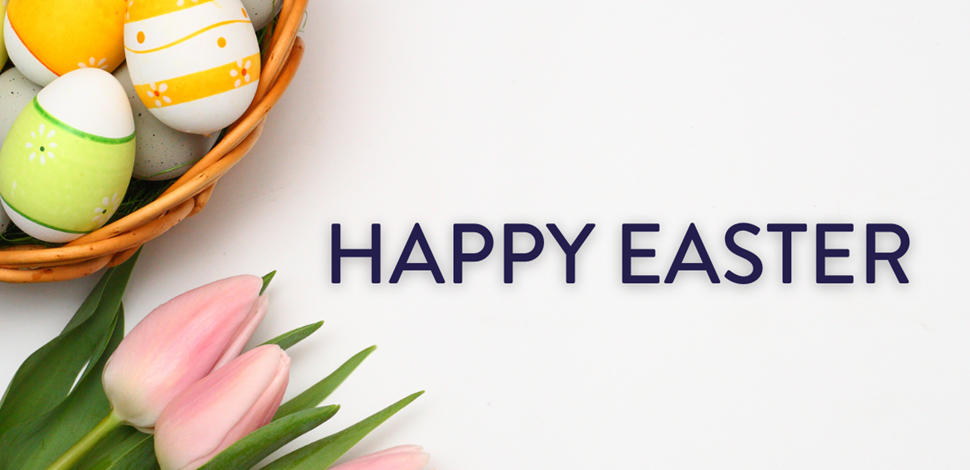Happy Easter to those celebrating this weekend! While Christmas may be the most widely observed Christian holiday today, Easter is actually the most important religiously, as it marks the death and resurrection of Jesus Christ, the event on which the entire Christian belief system is based.
What is Easter all about?
Easter commemorates the crucifixion by the Romans of Jesus Christ, who Christians believe to be the Son of God. Christians believe that three days after Jesus was killed by the Romans and laid to rest in his tomb, he was resurrected, coming back to life to prove his divinity and to bring a message of hope for humanity. Accepting the crucifixion and resurrection is one of the most important aspects of Christian belief - by accepting Jesus' sacrifice, Christians believe that their sins will be forgiven and they will go to heaven. It reminds them that suffering is a part of life and that God can understand what it is like for someone to suffer. Christians believe that Jesus was God incarnated on Earth for the sole purpose of dying as a sacrifice bearing the sins of all of humanity so that the rest of humanity could be saved. Thus, just as Jesus was saved from death by God, Christians will be reborn in the afterlife.
The meaning of the word “Easter” itself is still debated – some trace it to an earlier Pagan festival which was appropriated by Christians, while others think it is a translation from Latin or Old High German. The date on which Easter should be celebrated was also a major debate within the early church, and the debate was not settled until eight hundred years after Jesus’ death. In 325, the Council of Nicaea, where many church debates were settled in writing, decreed that Easter should be observed on the first Sunday following the first full moon after the spring equinox. This was accepted by most Christians, and thus today Easter can fall on any Sunday between March 22 and April 25. Eastern Orthodox churches use a slightly different calculation based on the Julian rather than the Gregorian calendar (which is 13 days ahead of the former), with the result that the Orthodox Easter celebration usually occurs later than that celebrated by Protestants and Roman Catholics. Moreover, the Orthodox tradition prohibits Easter from being celebrated before or at the same time as the Jewish festival of Passover which also falls in the spring.
How is Easter celebrated?
Easter is the culmination of Lent, the period of 40 days (not counting Sundays) before Easter, during which Christians traditionally fast and seek penance for their sins. The week leading up to Easter is known as Holy Week, and includes Maundy Thursday, the commemoration of Jesus’ Last Supper with his disciples before his execution; Good Friday, the day of his Crucifixion and death; and Holy Saturday, the transition between Crucifixion and Resurrection. In Catholic and Orthodox (and certain Protestant) traditions, a Great Vigil is held over Saturday night into Sunday morning in anticipation of Jesus’ resurrection.
All Christian traditions have their own special liturgical emphases for Easter, and (like Christmas) many traditions have developed which have little to do with the biblical story but are remnants of folk traditions which have been adopted into Christian practice. One common part of Easter celebrations is the eating of a lamb for dinner, which is symbolic of Jesus who is referenced in the Bible as a sacrificial lamb who is sacrificed for the benefit of humanity (“behold the lamb of God which takes away the sins of the world,” John 1:29). Another reason that Easter is celebrated with a great feast is that it traditionally marks the end of the period of Lent, and thus people indulge in all the things they have fasted and abstained from during Lent.
One of the main things that we may associate Easter with today is Easter eggs. The painting of decorative eggs for Easter was first recorded in the 13th century. One hypothesis for where this tradition originated is that people could not eat eggs during Lent and therefore, rather than letting them go to waste, they were painted and displayed as symbols of the Resurrection. Some have seen them as symbolic of the stone which was rolled away from Jesus’ tomb and revealed it to be empty, thus revealing his Resurrection. Others see it as symbolic of the resurrection itself - just as Jesus rose from the tomb, the egg symbolizes new life emerging from the eggshell. Easter Egg hunts were believed to have become popular in the late 1800s after Lucy Hayes, First Lady of the United States, sponsored an egg roll in 1878. People may have made the switch to Easter eggs over decorated hen’s eggs when people moved to urban areas and did not have a steady supply of hen’s eggs from farms as they would have in the past when most people lived on farms or near farmland.
The Easter Bunny is a similarly late addition to Easter traditions, having emerged sometime between the 17th and 19th centuries. Its exact origins are not known, but many believe it to have been a German tradition which then spread to the US with early German immigration. Rabbits are a notorious symbol of new life and fertility, and this may be why they came to be associated with a festival which is all about celebrating the regeneration of life. However, the Easter Bunny is not popular everywhere – in some European countries, for example, other animals including foxes and cuckoos are said to be the ones who deliver chocolate eggs to children on Easter morning.


